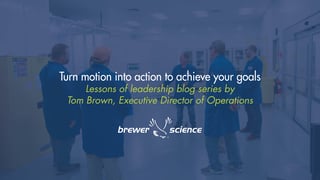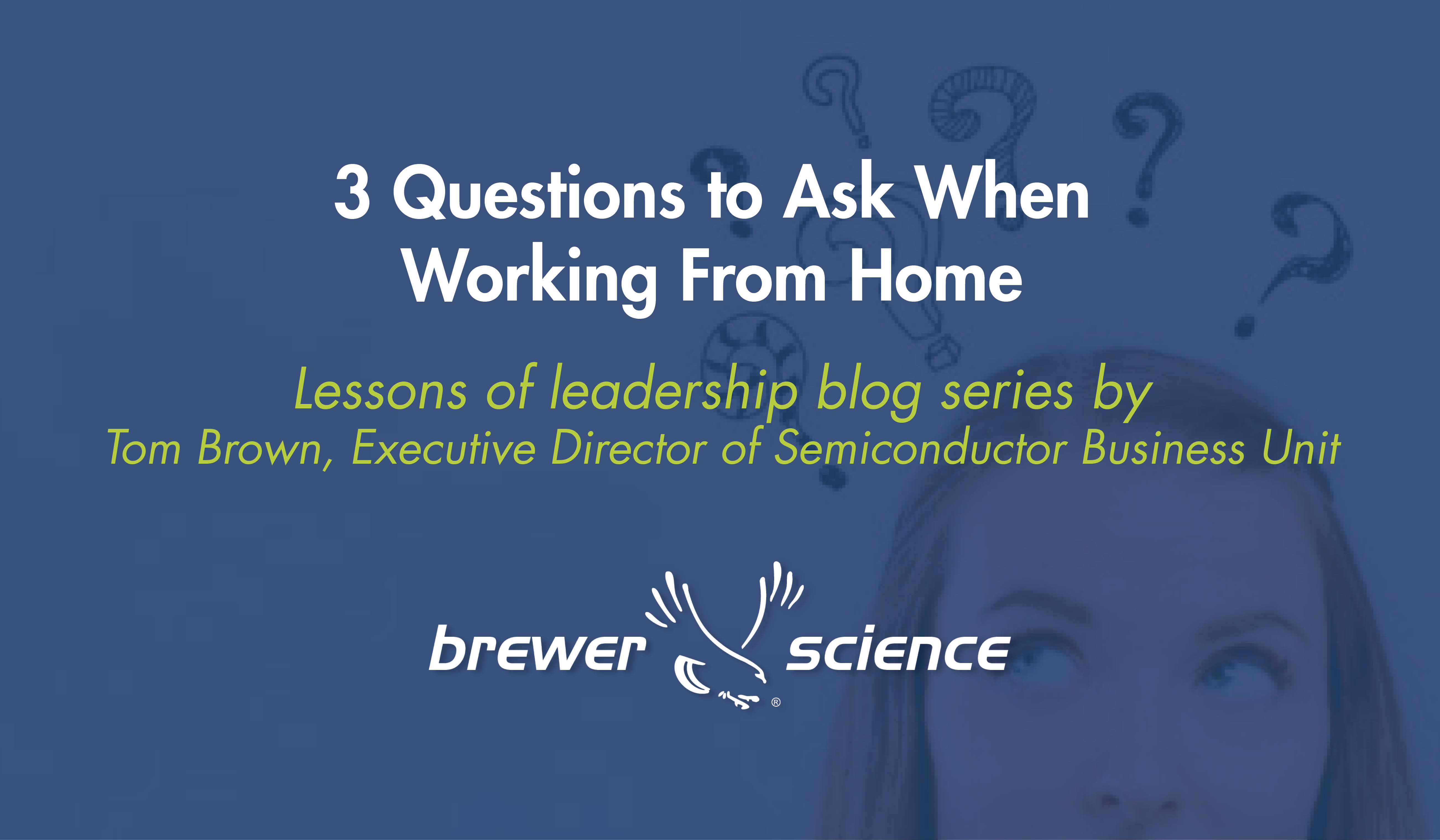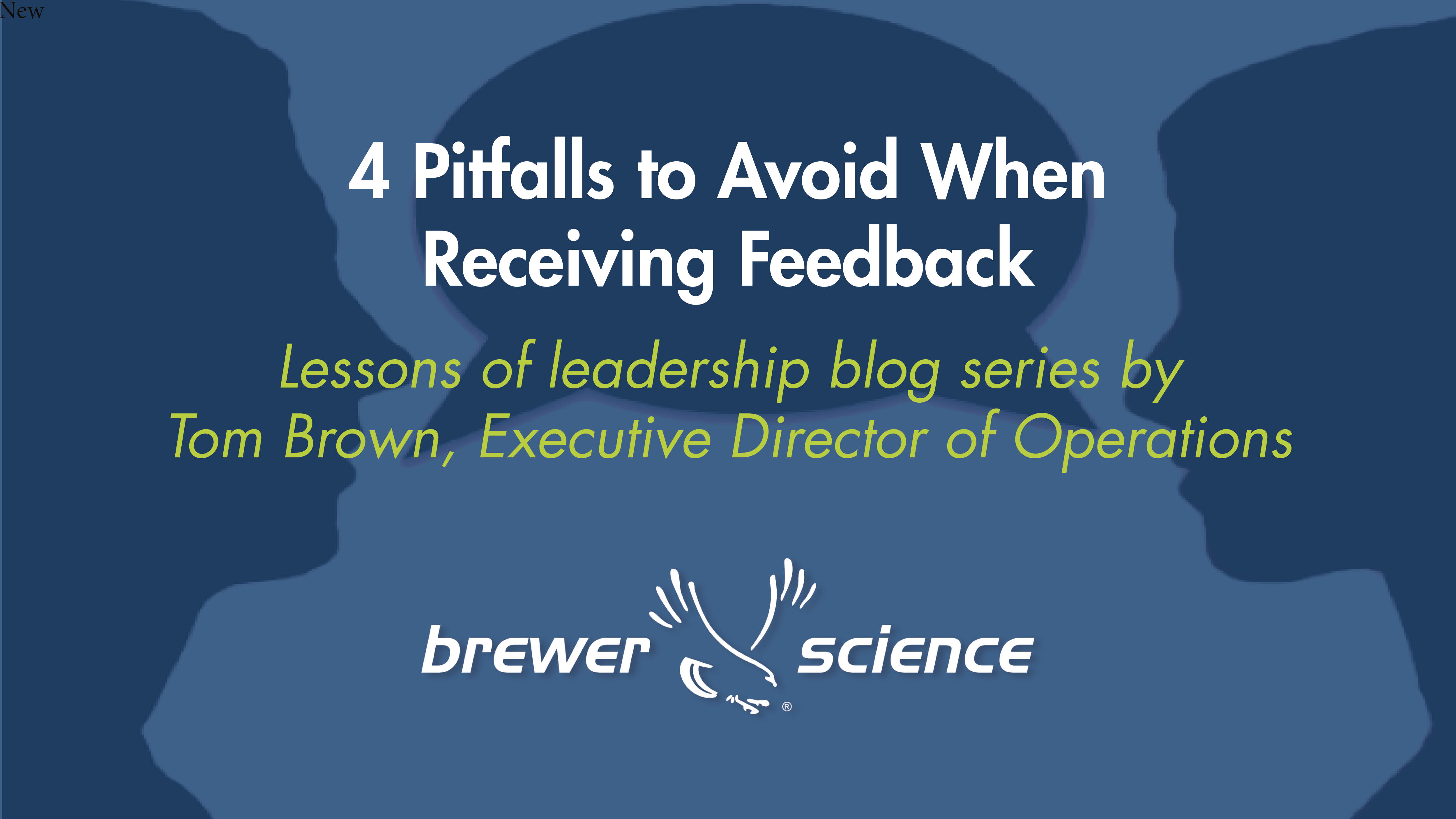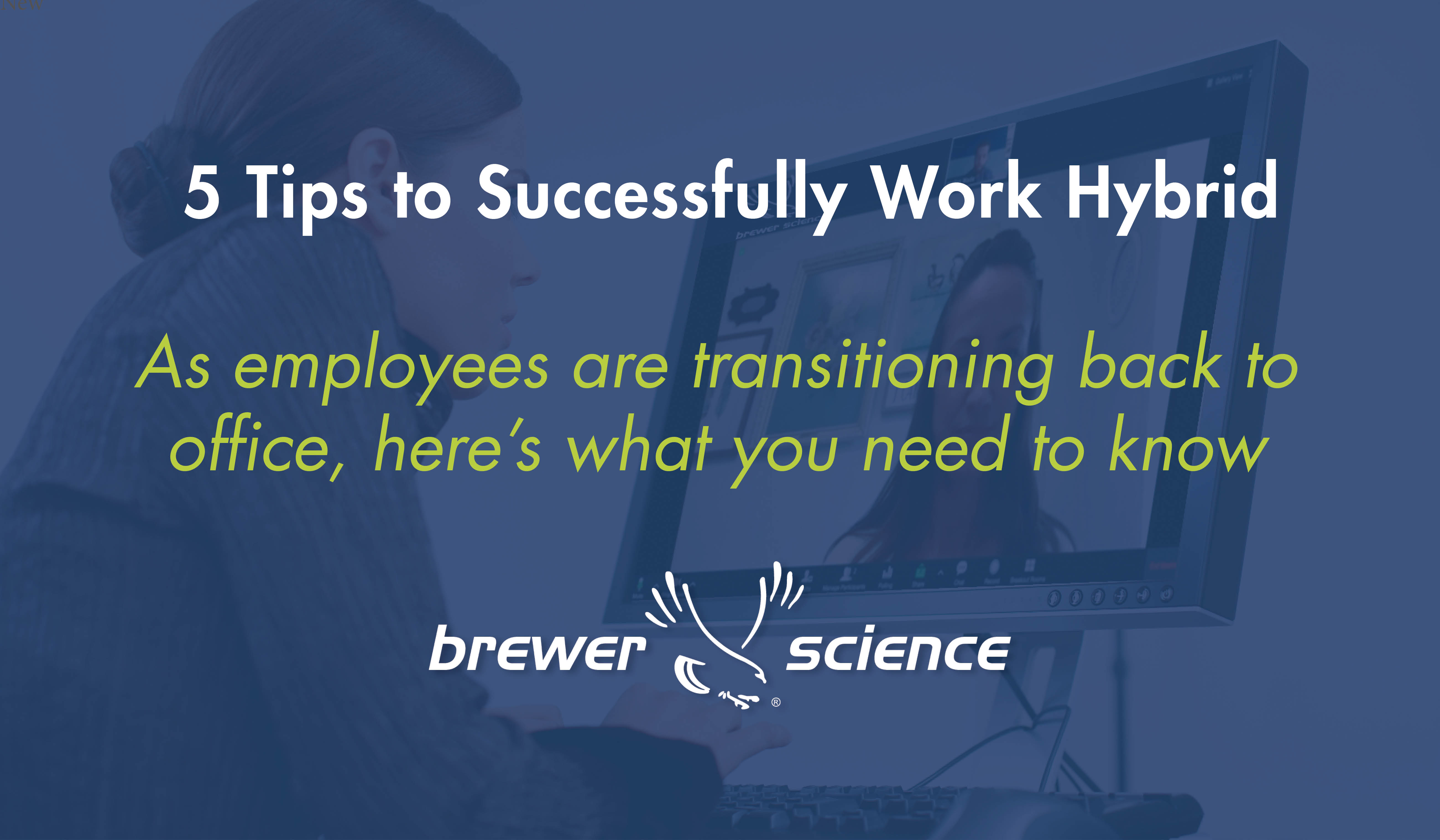Join Tom Brown, Executive Director of Operations at Brewer Science, as he shares inspirational leadership advice and professional growth stories.
The key to achieving your dreams is understanding the difference between motion and action. Motion is essential to understanding the situation and knowing risks and potential pathways. Motion dramatically increases your chance of success. However, if you are merely going through the motion, you will soon recognize a lack of achievement. If you have motion without taking action, you will never achieve your goals. A plan without action is only a dream. Understand the difference between motion and action; start executing the actions of your project today, and you will be on track to achieving your goal.
Planning the right actions
Not all actions will provide you with the right track to achieving your goal. Busy is not the same as progress. Thus, planning is essential to your efforts. Famously quoted by Benjamin Franklin, “If you fail to plan, you are planning to fail,” is true because you need to be strategic with your goal setting and take steps to create an action plan to achieve it.
One example of planning the right actions is outlining a SMART Goal. SMART goals are goals that are Specific, Measurable, Attainable, Relevant, and Time-based. The SMART goal outline allows for an organized goal-setting approach to achieving a higher objective.
Understanding optimistic approaches
When faced with a decision in which I don’t see a clear option or answer in front of me, I pose this question, “It may not be right, but is it wrong?” I have used this principle successfully throughout my career because it keeps me propelling forward. Sometimes it might not be considered the correct path, but if it’s not the wrong one – I know it’s at least not a step backward. Sometimes that plan might be a sidestep or the road “less traveled by,” but there are three main benefits you reap by taking action:
- You learn based on your actions. Even if it isn’t the ideal path, you know more than when you started. Remember, there isn’t a way to fail since “fail” is just your first attempt in learning.
- You gain momentum. You and your team have actions that keep you from being frustrated and stagnant. It engages people to move forward and keep looking at the end goals.
- You change your perspective. Moving down a path allows you to have a different view than where you stood before. A path may appear that might not have been visible before taking that step. That action may help you see around an obstacle and get back on the path forward.
Applying this concept to an actual workplace situation
Situation: Customer negotiates a larger safety stock of products that will require you to expand your storage area beyond your current capability. A facility expansion was not part of your strategic plan going forward.
Option 1 – Start the lengthy planning process. You start the motion train for your planning process. Set up meetings with cross-functional teams. Assess your current capabilities and see what areas meet code, where you can upgrade, and where you could expand and build. You will have to revisit the capital planning activity and rework the budget to identify when you could squeeze in another building. Then once you have placed some potential avenues through multiple meetings, you begin the painstaking quote gathering process that changes weekly with dangerously long lead times. Let’s not forget that you are doing this while moving forward on all the other projects. You invest the time to put together a proposal for review with management. Then redo it with their input and repeat the process. All of this before you ever get back to the customer with a “yes, but…” or a negotiation on a due date.
Option 2 – Take action. While putting things into motion, we can act by answering a simple question: “How do we get additional capacity today?” Today, the timeframe seems ambitious, but the time itself is not critical. It is the call to immediate action that drives an immediate solution. Starting today reinforces the need for action, not just planning. Asking that question leads to two quick possible solutions in this scenario: Find someone who has additional capacity and rent space or bring in a storage pod and park at our facility.
Is the problem solved? Not entirely, but we do have a containment in place like you find in your 8D problem-solving approach. The call to action puts us in a position to meet the customers’ needs in the near term, buying us time to evaluate a longer-term, optimal solution that can be more cost-effective, strategic, and lean.
While some are talking, others are doing. While some are planning, others are executing. While some are in motion, others are taking action. Some positions in a company naturally spend more time in motion to support those that spend more time in action. As we talked about earlier, balance is critical to overall success. It is not either/or, it is both.
In theory, taking action seems simple; however, it’s difficult in practice. I will admit that I have been guilty of giving responses such as, “We are meeting next week...” or “We are planning to…” – and I notice that I need to be better about taking action rather than being stuck in motion. This is also evident at home; you can ask my wife about the list of things I have yet to complete due to overthinking and planning. Every situation is different. It’s difficult to always be in action, but by planning the right actions and having optimistic approaches, you can break out of the planning loop and make more progress towards your goals. Motion with action is what is needed to move beyond today.
Brewer Science is a company that believes deeply in sustaining long-term success through value-based culture, diversity, and growth. Learn more about Brewer Science’s company culture.





Subscribe to Our Blog